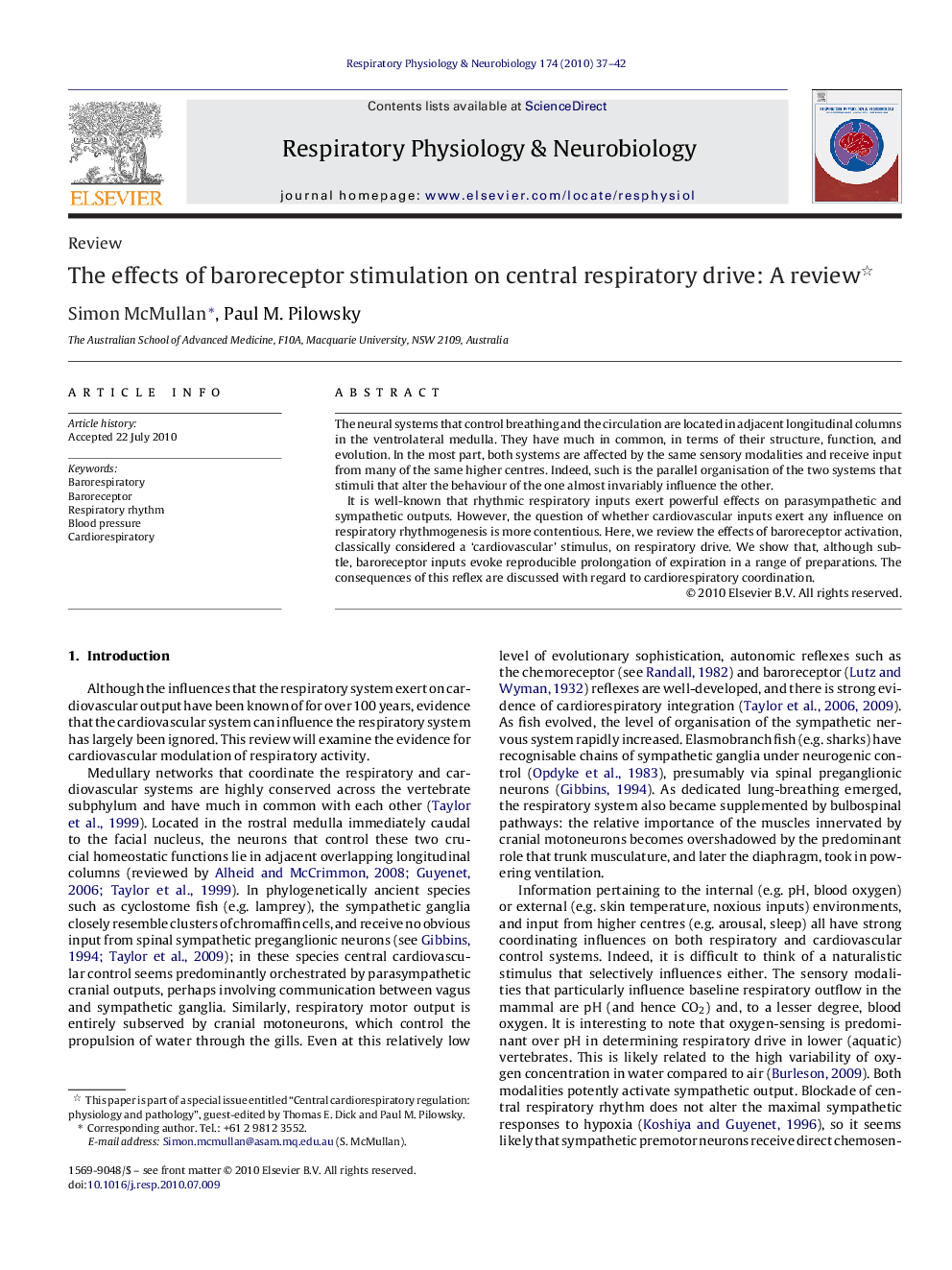| Article ID | Journal | Published Year | Pages | File Type |
|---|---|---|---|---|
| 2847605 | Respiratory Physiology & Neurobiology | 2010 | 6 Pages |
The neural systems that control breathing and the circulation are located in adjacent longitudinal columns in the ventrolateral medulla. They have much in common, in terms of their structure, function, and evolution. In the most part, both systems are affected by the same sensory modalities and receive input from many of the same higher centres. Indeed, such is the parallel organisation of the two systems that stimuli that alter the behaviour of the one almost invariably influence the other.It is well-known that rhythmic respiratory inputs exert powerful effects on parasympathetic and sympathetic outputs. However, the question of whether cardiovascular inputs exert any influence on respiratory rhythmogenesis is more contentious. Here, we review the effects of baroreceptor activation, classically considered a ‘cardiovascular’ stimulus, on respiratory drive. We show that, although subtle, baroreceptor inputs evoke reproducible prolongation of expiration in a range of preparations. The consequences of this reflex are discussed with regard to cardiorespiratory coordination.
